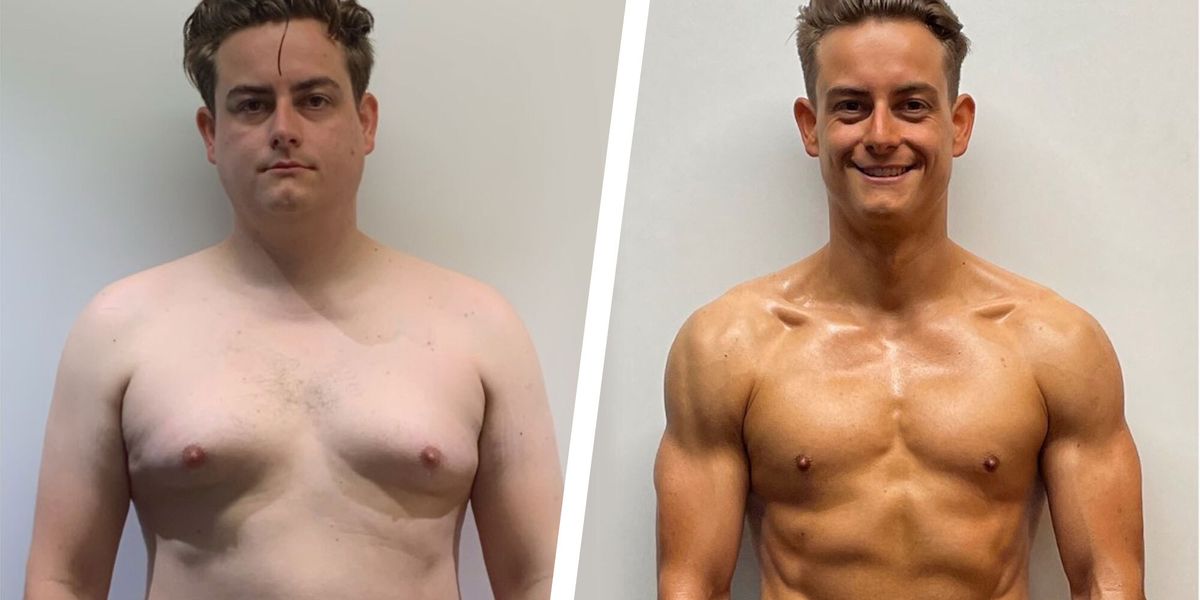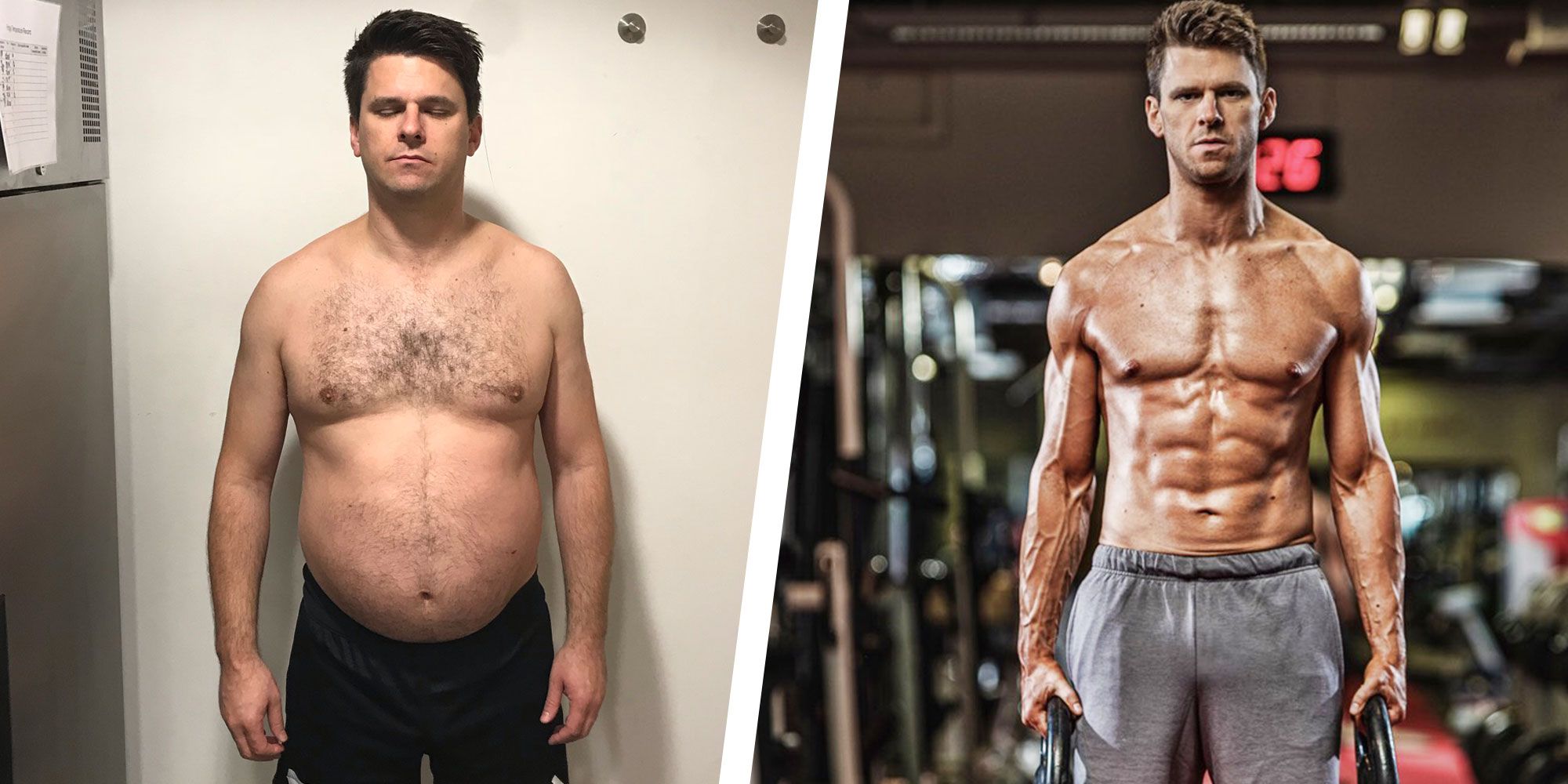6 Month Transformation Fat To Fit

The scale read 285 pounds, a stark number that stared back at Sarah Miller, a 32-year-old accountant from Chicago. Six months later, that number had dwindled to 160, a testament to a grueling but ultimately rewarding journey of self-discipline and scientific application. Her story, while exceptional in its results, highlights a growing trend: the conscious, data-driven pursuit of radical physical transformation.
This isn't just another weight loss narrative; it’s a meticulously documented case study of how commitment, informed by current fitness science, can yield astonishing results. Miller's experience, backed by insights from certified trainers and nutritionists, serves as a powerful illustration of what is achievable with dedication. It also opens a wider discussion on the role of personalized fitness plans and the ethical considerations surrounding rapid weight loss strategies.
The Starting Point: A Wake-Up Call
Sarah's journey began with a doctor's appointment. Her physician expressed concerns about her rising blood pressure and cholesterol levels. “It was a wake-up call,” Miller recalls. “I knew I needed to make a change, and not just a superficial one.”
Initial Assessment and Goal Setting
The first step was a comprehensive assessment by a certified personal trainer, John Davis, and a registered dietitian, Emily Carter. Davis conducted a series of tests to gauge Miller's body composition, cardiovascular fitness, and strength. Carter, meanwhile, analyzed her dietary habits and identified areas for improvement.
Based on these assessments, they established realistic yet ambitious goals. The target was to lose 125 pounds in six months, improve her cardiovascular health, and build lean muscle mass. These goals were broken down into smaller, weekly targets to maintain momentum and motivation.
The Pillars of Transformation: Diet and Exercise
Miller's transformation hinged on two key pillars: a carefully calibrated diet and a rigorous exercise regimen. Neither worked in isolation; they were designed to complement each other for maximum effectiveness. This holistic approach is vital, according to experts.
Nutritional Overhaul
Carter designed a personalized meal plan for Miller, emphasizing whole, unprocessed foods. It focused on lean protein sources like chicken, fish, and beans; complex carbohydrates from vegetables and whole grains; and healthy fats from avocados and nuts. Processed foods, sugary drinks, and excessive saturated fats were strictly eliminated.
The plan involved calorie restriction, but not to a dangerous extent. Miller consumed approximately 1500-1700 calories per day, depending on her activity levels. Carter emphasized the importance of tracking macronutrient intake (protein, carbohydrates, and fats) to ensure she was meeting her nutritional needs.
"Sustainable weight loss is about making lifestyle changes, not crash dieting," Carter explains. "It's about finding a balance that you can maintain long-term."
The Exercise Regimen: A Gradual Progression
Davis designed a progressive exercise program that combined cardiovascular training and strength training. The initial focus was on building a solid foundation of cardiovascular fitness. Miller started with brisk walking and gradually increased the intensity and duration of her workouts.
As her fitness level improved, Davis incorporated more challenging cardiovascular exercises like running and cycling. She also began incorporating strength training exercises using bodyweight, dumbbells, and resistance bands. The program included exercises targeting all major muscle groups.
The frequency and intensity of the workouts were gradually increased over time. By the end of the six-month period, Miller was working out six days a week, with a combination of high-intensity interval training (HIIT), steady-state cardio, and strength training.
Monitoring Progress and Adjusting the Plan
Regular monitoring of progress was crucial to Miller's success. She tracked her weight, body measurements, and energy levels on a weekly basis. Davis and Carter reviewed this data and made adjustments to her diet and exercise plan as needed.
Plateaus are a common occurrence in weight loss journeys. When Miller hit a plateau, Davis and Carter would make small adjustments to her calorie intake or exercise routine to reignite progress. This involved either slightly decreasing her calorie intake or increasing the intensity or duration of her workouts.
Mental and Emotional Support
The physical transformation was accompanied by a significant mental and emotional journey. Miller sought support from friends and family. She also found that joining a support group online provided her with a sense of community and encouragement.
“There were definitely times when I felt discouraged and wanted to give up,” Miller admits. “But having a strong support system and focusing on the small victories helped me stay motivated.”
Ethical Considerations and Potential Risks
While Miller's transformation is inspiring, it's important to acknowledge the potential risks associated with rapid weight loss. Losing a significant amount of weight in a short period of time can put a strain on the body and may lead to health complications. It's crucial to consult with a healthcare professional before embarking on any rapid weight loss program.
Some experts also raise concerns about the psychological impact of rapid weight loss. It's important to ensure that the individual is mentally and emotionally prepared for the changes they are undergoing. Body image issues, eating disorders, and depression are potential risks that need to be addressed.
Long-Term Sustainability and Maintenance
Maintaining weight loss is often more challenging than losing it. Miller understands this and is committed to making sustainable lifestyle changes. She continues to follow a healthy diet and exercise regularly.
Carter has helped Miller develop a maintenance plan that allows for some flexibility while still ensuring she stays within a healthy weight range. This plan includes strategies for dealing with social situations and preventing relapse.
Davis continues to work with Miller on her fitness goals, focusing on building strength and endurance. He also emphasizes the importance of setting new challenges to stay motivated and prevent boredom.
Looking Forward: A New Chapter
Sarah Miller's journey is far from over. She is now focused on using her experience to inspire and support others. She plans to become a certified personal trainer and share her knowledge with others who are struggling with their weight.
Her story serves as a powerful reminder that with dedication, discipline, and the right guidance, radical physical transformation is possible. However, it is imperative to approach such endeavors with caution, prioritizing health and well-being above all else.
Ultimately, Miller’s success underscores the importance of personalized fitness plans and the ongoing need for informed discussions about healthy and sustainable weight management strategies. The key takeaway is not just about rapid transformation, but about fostering a lifelong commitment to health and well-being.


















